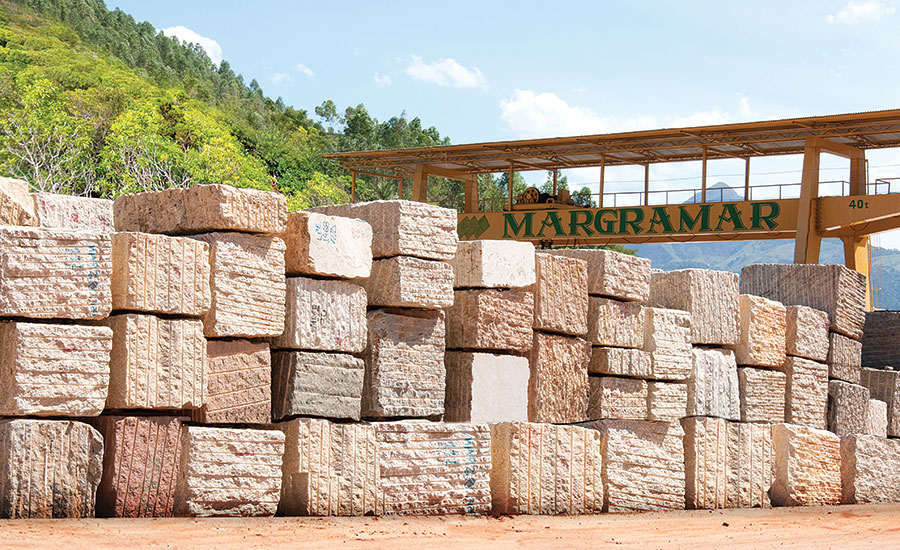Travelling With Granite Quarries in South Africa: A Visual Odyssey
Travelling With Granite Quarries in South Africa: A Visual Odyssey
Blog Article
Revealing the Mysteries of Granite Quarrying: Where Stamina and Sophistication Meet
The globe of granite quarrying is a realm where the raw stamina of nature assembles with human artistry to create frameworks that stand the test of time with an air of beauty. From the depths of quarries to the meticulous polishing in workshops, the procedure of changing granite into architectural wonders is an intricate dancing of practice and advancement. As we peer into the depths of this old craft, we begin to reveal the surprise complexities that form the extremely significance of our constructed environment.
The Beginnings of Granite Quarrying
In the annals of architectural history, the origins of granite quarrying are shrouded in a tapestry of ancient craftsmanship and geological wonders. Going back to ancient Egypt and Mesopotamia, the removal of granite from quarries noted the beginning of a journey that would ultimately cause the production of a few of the globe's most famous structures.
Granite quarrying's roots can be mapped to the experienced artisans that identified the stone's toughness and aesthetic appeal. Through a mix of primitive tools and large determination, these very early quarry employees uncovered granite blocks that would end up being the structure blocks of worlds.
As civilizations advanced, so did the methods of quarrying granite. The Romans, renowned for their engineering expertise, established innovative techniques for removing granite to create monuments, holy places, and roadways that stood the examination of time.
The heritage of these ancient quarrying practices remains to form contemporary design, with granite remaining an icon of toughness and elegance in construction tasks around the globe. (granite quarries in south africa)
Tools of the Quarrying Trade
The development of granite quarrying methods from old civilizations to modern-day times highlights the important duty played by the tools of the quarrying sell forming the sector's techniques. In ancient times, quarrying devices were rudimentary, commonly consisting of knives, hammers, and wedges made from materials like bronze or iron. These tools needed significant workforce and time to remove granite obstructs from quarries.

Additionally, the intro of pneumatically-driven tools and high-powered equipment has considerably decreased the physical labor required in quarrying operations, improving worker safety and efficiency. As the quarrying industry remains to innovate, the tools of the trade continue to be at the center of driving progression and forming the future of granite removal.
Removing Blocks of Granite
Utilizing precision machinery and progressed techniques, the extraction of granite obstructs from their website quarries has actually become an innovative process in the modern-day quarrying sector. The initial step includes determining the place and size of the click to read granite down payment to establish one of the most effective removal approach. Once an ideal website is chosen, the removal procedure begins with the exploration of holes for the positioning of explosives. Controlled blasting techniques are after that utilized to break apart the granite into manageable sections.

Polishing and Finishing Strategies
To attain a flawless surface area on granite blocks, skilled artisans utilize a collection of thorough sprucing up and completing strategies. After the preliminary removal and forming procedures, the granite obstructs go through a thorough sprucing up phase to improve their natural elegance and sturdiness. One typical approach used in brightening granite is diamond abrasion, where industrial diamonds are used to grind and polish the stone to a smooth finish. This procedure not just produces a lustrous surface but likewise makes sure uniformity in shade and structure across the granite block.
In enhancement to polishing, finishing strategies are related to additional fine-tune the granite's look. These techniques might consist of flaming, refining, or cleaning, each offering special appearances and finishes to suit various visual choices. Flaming, the original source as an example, entails subjecting the granite surface to heats to create a rough, textured coating, perfect for exterior applications where slip-resistance is vital. Developing, on the other hand, provides a matte coating that is smooth to the touch, best for interior counter tops and flooring. By meticulously selecting and applying these polishing and finishing methods, artisans can change raw granite blocks into splendid pieces that display both strength and beauty.

Environmental Impact and Sustainability
With the growing emphasis on environmental consciousness in the market, granite quarrying practices are progressively scrutinized for their influence on natural sources and long-term sustainability. Additionally, the transport of granite from quarries to processing facilities generates carbon discharges, further adding to environmental deterioration.
To alleviate these impacts and make certain sustainability in granite quarrying, industry stakeholders are taking on different actions. Carrying out sophisticated technologies to decrease power consumption and water use, redeeming quarried land for environmental remediation, and advertising responsible sourcing methods are some techniques being employed. Qualifications such as the Woodland Stewardship Council (FSC) and the Leadership in Energy and Environmental Style (LEED) help customers recognize ecologically friendly granite items.
Conclusion
Finally, granite quarrying is a procedure that calls for specialized tools and methods to extract blocks of granite and brighten them to a high level of coating. While the ecological influence of quarrying can be substantial, efforts are being made to enhance sustainability techniques in the market. Generally, granite quarrying is a fragile balance in between taking advantage of the stamina and sophistication of this all-natural rock while decreasing its effect on the atmosphere.
Report this page